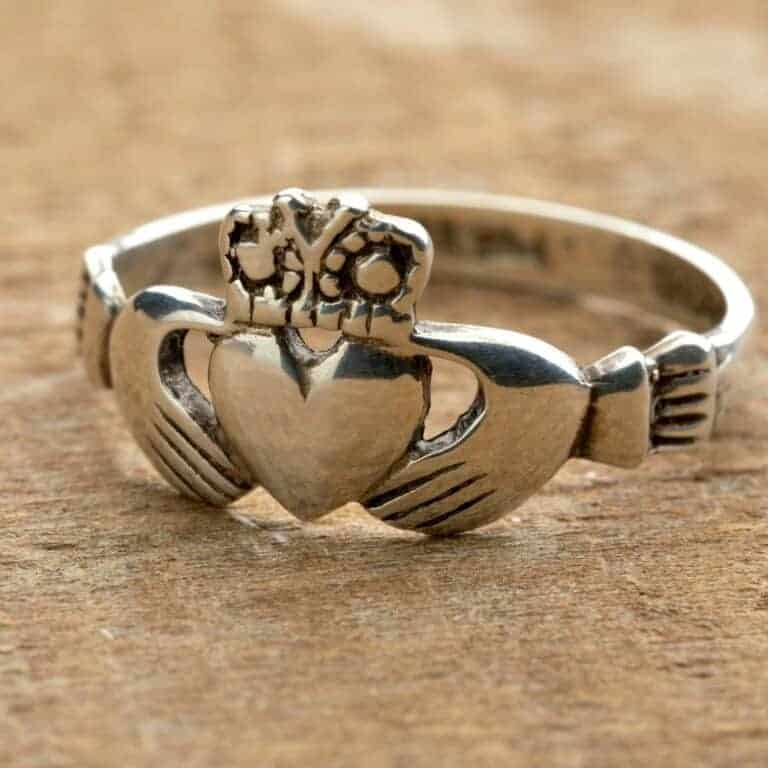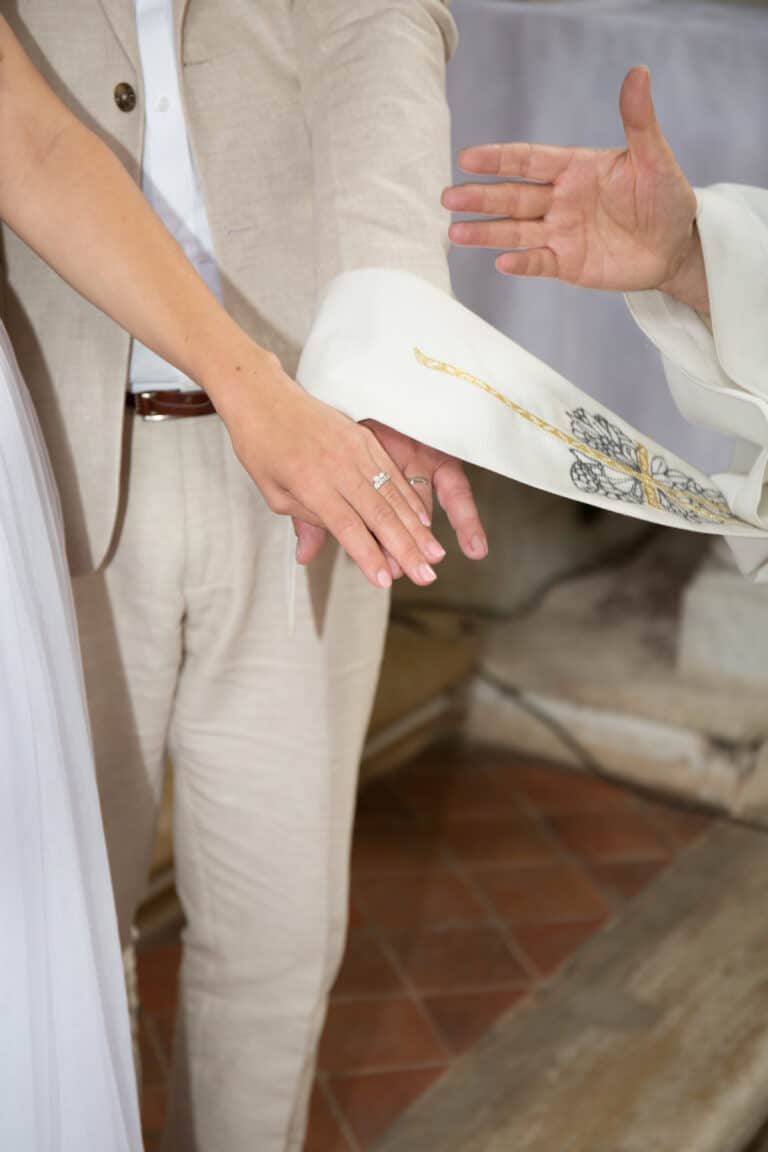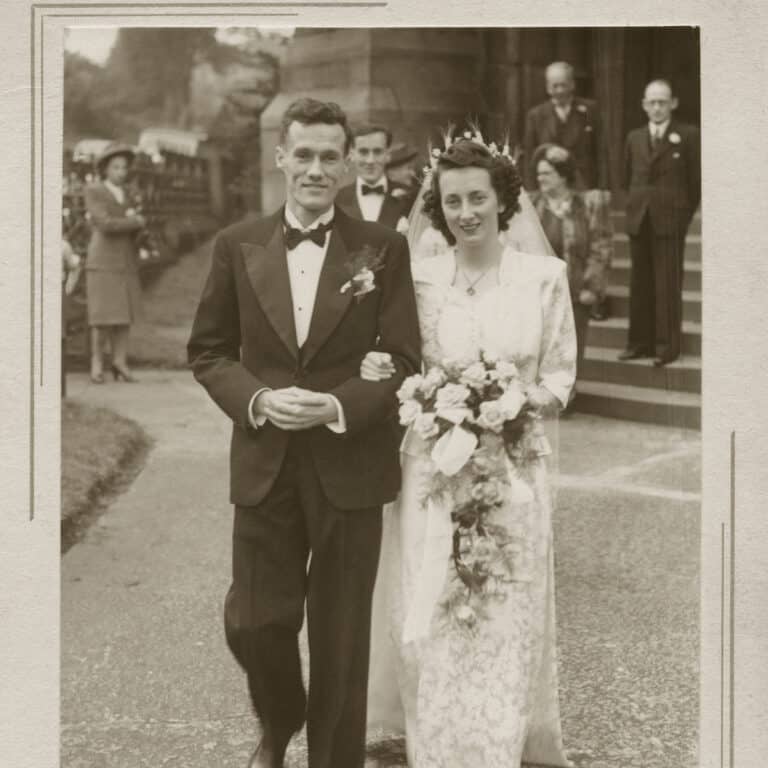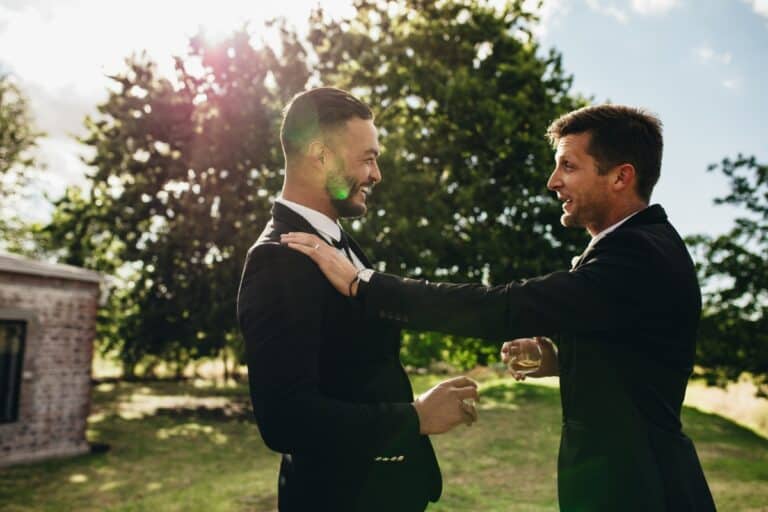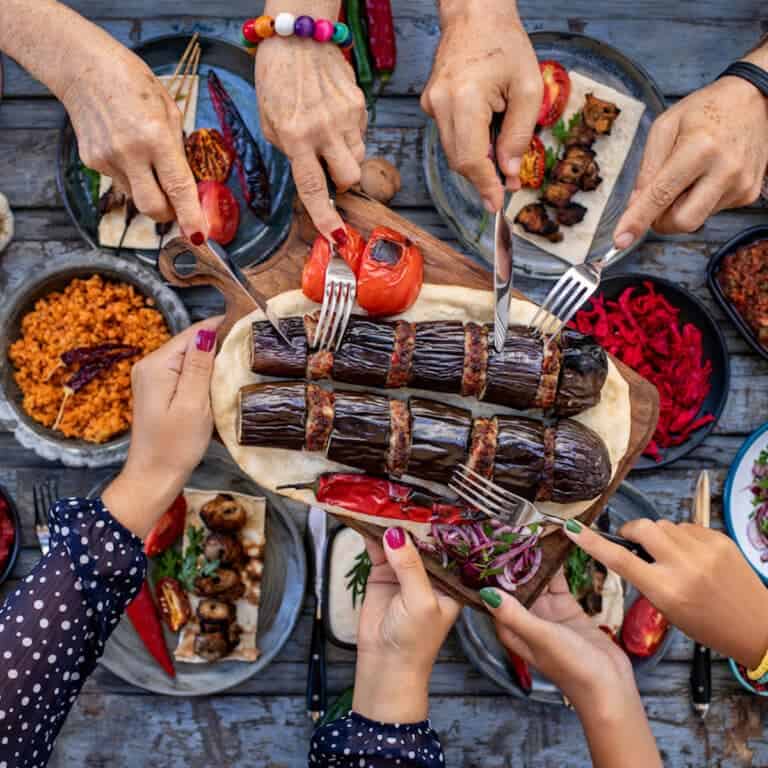Unveiling the Glamour of 1930s Weddings
The 1930s were challenging times, marked by the Great Depression and significant social and economic changes. Despite these hardships, couples found ways to celebrate their love with memorable weddings that showcased the best of the era’s fashion and decor.
Here we explore how 1930s weddings were influenced by the times.
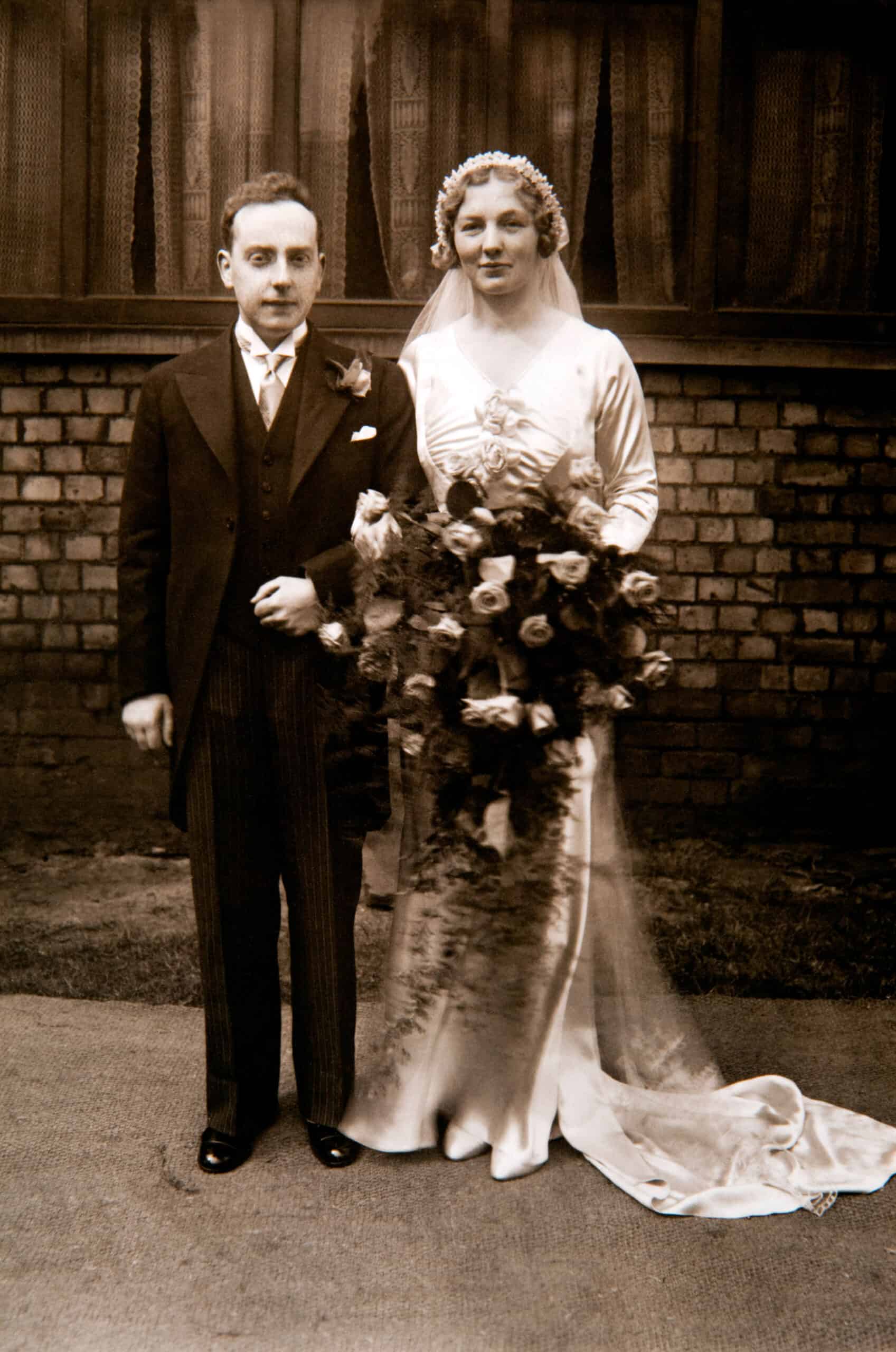
Weddings in the Great Depression Era
1930s weddings were marked by the influence of the Great Depression and the era’s social and economic changes.
It can be seen that marriage rates are among the first things to be affected when times are tough. The early 1930s saw very tough times worldwide. Nonetheless, the couples that did decide to tie the knot did their best to achieve a high-fashion feel but at a reasonable budget.
After the glitz and glamour of the 1920s flapper fashion era, 1930s wedding fashion became conventional and practical. While brides aimed to be glamorous and elegant where possible, practicality was key for many.
1930s Wedding Fashion
Wedding Dress Inspiration
Big-screen movie stars greatly inspired 1930s fashion. The outfits of American socialite Wallis Simpson and actresses such as Ginger Rogers and Joan Crawford were the height of fashion at the time. Joan Crawford’s white organdy party dress in Letty Lynton (1932) inspired many a bridal gown with its beautiful oversized ruffled sleeves, high necks, and floor-length hemlines.
Visiting royalty and the popularity of the musical Gone with the Wind (1939) reignited the style of the Victorian ball gown for wedding dress design in the late 30s. Unfortunately, it was a short-lived phase for bridal wear, but it did influence the coming decade’s formal gowns.
1930s Wedding Dress
For brides that could afford a lavish gown, the silhouette of 1930s wedding gowns had a sleek and slim profile. The dress’s shape was achieved with bias-cut fabric that hugged the body and used lightweight materials such as satin, silk, rayon and lace.
These materials had a subtle sheen that added to the dress’s elegance. The gowns were longer and more fitted than we had seen in the 1920s, with some brides choosing a long train trailing behind.
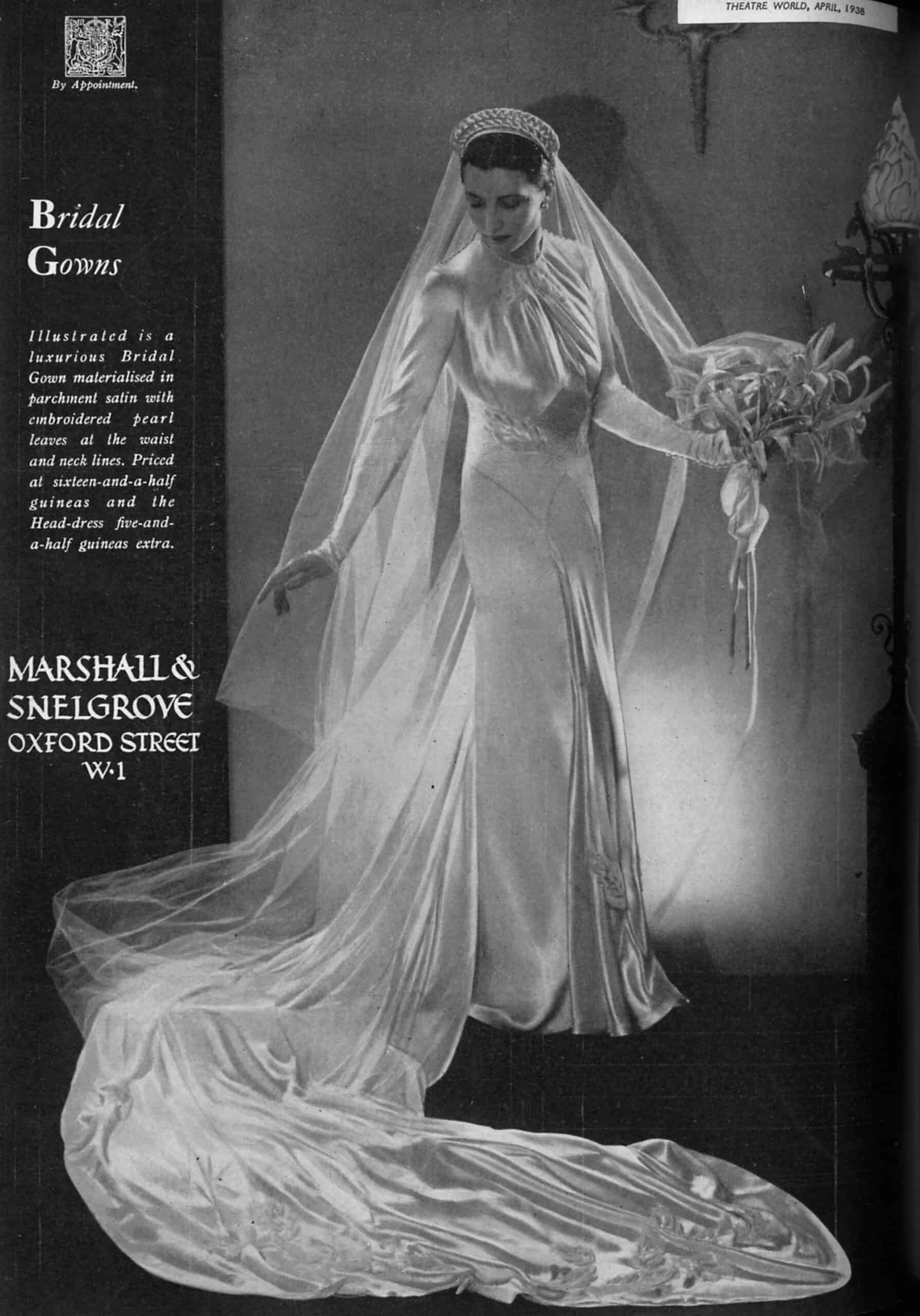
Art deco detailing was still prominent, and the insertion of geometric and long panels added some glamour. The definition of the bride’s waist was achieved by the use of fabric belts to accentuate the hourglass figure. Pleats added around the waist and neckline made the gown take on an hourglass shape.
The dress’s necklines were typically high and adorned with lace or other embellishments. Beading, embroidery, and lace added a touch of glamour and elegance to the dress.
Puffed sleeves were becoming popular in both short and long-sleeve styles after a previous decade of a more shapeless silhouette. It was common to see fitted long sleeves, not only due to the fashion at the time but also as a church requirement. A bride might wear a short sleeve dress if she chose. However, a cropped button-up jacket must be worn for the church ceremony.
Improvising in hard times
During the depression, it was common for less wealthy brides to sew their own wedding dresses due to the tough economic times. Materials and patterns were able to be purchased from the local tailor or a mail-order catalog. Future brides followed and copied the trending fashions found in the latest bridal magazines.
During the 30s material costs for silk and lace increased more than many could afford. Rayon, satin, and tulle were becoming popular options for brides wishing to make their own gowns.
If a bride was able, she may purchase a versatile new dress to wear for her wedding. A white silk or chiffon tea dress was a popular option. This could be dyed a different color and worn again after the wedding. Brides sometimes chose to upcycle old wedding dresses. Changing the sleeves, trim, buttons, or other embellishments, constructing a whole new dress.
For some brides, any thought of a new gown was too much for them to afford. In this case, a popular alternative was to wear their Sunday best.
Accessories
Wedding accessories commonly included floor-length veils or bridal hats, gloves, and white stockings. Brides also carried a bouquet.
Veils made of tulle or lace were attached to a headpiece or tiara. Lace had been a popular veil material, but tulle was gradually replacing it and a combination of the two was common for a bridal veil.
Some brides wore heavily embellished skull caps with attached birdcage veils covering the face. This was a popular accessory in the 1920s. These were still seen in the early 1930s and have become a timeless style representing the vintage 1930s theme.
Tiaras of stretched lace dawning tiny pearls circled the head like a halo. At the same time, wealthier brides wore art deco-style tiaras decorated with diamonds and rhinestones. If a bridal hat was worn, it was fashionable at the time for the hat to be perched on an angle covering one of the bride’s eyes. Large sun hats were a popular option for summer weddings.
Flowers
As we would later see in the war times of the early 1940s, many brides grew their flowers in their backyards during the depression. The bouquet style of the 1930s favored the sheath style. A large bouquet of long-stemmed flowers in a vertical shape draped over the bride’s arm.
Many trumpet-shaped blooms, such as Calla and Easter lilies, were popular choices for bouquets. Other popular options include fragrant flowers such as roses, hollyhocks, foxglove, and carnations.
Hairstyles
Wedding hairstyles for women tended to be sleek and sophisticated, emphasizing elegance and simplicity. Some popular styles of the era include:
- The Marcel Wave: Characterized by deep waves and curls, created using a special curling iron called a Marcel iron. The style was often worn with a side part and cascading waves that framed the face.
- The Chignon: The chignon was a classic style of the 1930s, which involved twisting the hair into a low bun at the nape of the neck. This style was often accessorized with a decorative comb or ribbon.
- The Finger Wave: This style involved creating soft, sculpted waves with the fingers and a comb, giving the hair a sculptural, almost architectural look. Finger waves were worn with a side part and pinned back at the sides.
- The Bob: The bob was a popular hairstyle of the 1920s and early 1930s, characterized by a short, chin-length cut with or without bangs. Bobs were often styled with soft waves or curls and were sometimes accessorized with decorative headbands or hairpins.
- The Updo: Updos were another popular wedding hairstyle of the 1930s, often featuring intricate twists and braids pinned up at the back of the head. Accessories such as flowers, combs, and pearls were often used to add a touch of elegance to the style.
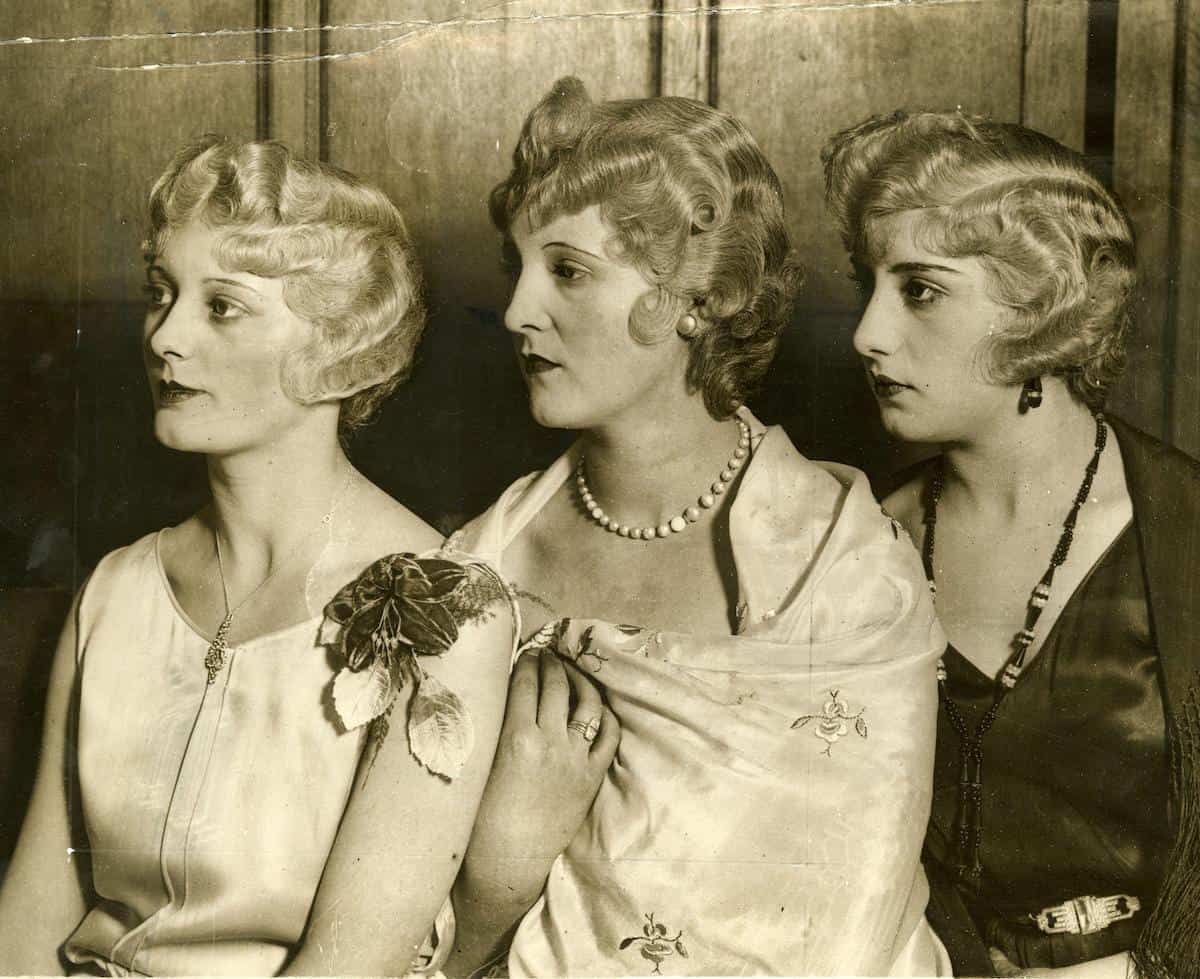
Men’s Fashion
In men, a clean-cut, well-groomed appearance was highly valued in the 1930s. A clean-shaven face and shortly cut and well-styled hair were a must for the groom and groomsmen.
Conservative suit colors such as black, navy, or gray were favored. Suits were made from wool or wool blend and featured wide lapels and single-breasted jackets. High-waisted, slightly tapered, and creased trousers. White or off-white shirts made from cotton or linen with a pointed collar, long sleeves, and a button front.
A solid color or slightly patterned tie made from silk or other materials was an essential accessory for the wedding day. Other accessories include a pocket square, cufflinks, and tie clips. Shoes were typically black leather lace-up dress shoes. Hats were still a regular part of the male attire. Flat caps were becoming increasingly popular. However, the more formal-looking top hats were worn for weddings.
The best man would be dressed similarly to the groom. If the groom wore a solid color tie, the best man would likely wear the same colored tie with a discreet pattern or stripe through it.
Entertainment
Even during the hard times of the depression, people sought entertainment. The radio, movies, and dance were all options people turned to forget their troubles. Radio programs, music, dance competitions, and plays were growing in demand. With high unemployment and prohibition regulations restricting some activities, people looked for new ways to entertain and be entertained.
Gangster movies, comedies, and at the tail end of the ’30s, musicals such as Gone with the Wind (1939) and The Wizard of Oz (1939) were great sources of entertainment and inspiration when it came to music and dancing. It was common for couples to incorporate the songs and popular dance moves from these films into their wedding entertainment.
Music and Dance
At weddings, music and dancing were popular entertainment for your guests. During this era, couples hired swing bands, jazz singers, and big band music. A decade of unforgettable love songs saw the likes of Irving Berlin, Cole Porter, Duke Ellington, and Richard Rogers used for the happy couple’s first dance.
Cheek to Cheek” by Irving Berlin (1935), “Night and Day” by Cole Porter (1932), and “Isn’t it Romantic” by Richard Rogers (1932) were the hits at the time.
Hiring a live band to perform these hits was a popular choice for wedding entertainment. Many couples hired big bands or swing orchestras to play at their reception. The bands would play music for dancing and vocal performances. Songs such as the swing classic “it don’t mean a thing (if it ain’t got that swing)” were a hit with getting the guests out on the dance floor.
Some couples would hire professional dancers to perform for their guests or even teach their guests a new dance move or two. Dance styles included swing, tap, ballroom, and other dance performances.
With budgets stretched, some wedding guests would perform their own performances, such as singing or playing musical instruments, a fun way to involve everyone in the entertainment.
Food and drink
As the 1930s was a decade that spanned the great depression and the beginning of WW2, so wedding food was done on a budget.
From 1919 to 1933, prohibition meant a nationwide ban on making, transporting, importing, and selling alcohol in the United States. This meant dry weddings for much of the early 30s and no having to deal with drunk guests.
The repeal of prohibition in 1933 made it legal to purchase alcohol again. This meant the return of wedding toasts with a wine glass in hand.
- Appetizers: Some popular appetizers during the 1930s included deviled eggs, oysters, shrimp cocktails, and canapes.
- The Main course: For the main course, dishes such as Beef Wellington, chicken cordon bleu, lobster thermidor, or roasted pork loin were popular. Foods you would enjoy at a Sunday family lunch.
- Side Dishes: Side dishes included roasted vegetables, mashed potatoes, sweet potato casserole, creamed spinach, and buttered green beans.
- Dessert: Classic 1930s treats such as pineapple upside-down cake, baked Alaska, chocolate puddings, or fruit tarts along with wedding cake were common
- Drinks: With prohibition in full swing in the early 1930s, non-alcoholic beverages like lemonade, iced tea, and fruit punches were popular choices of refreshments. Once prohibition ended, gin and tonics, whiskey sours, and cocktails were popular.
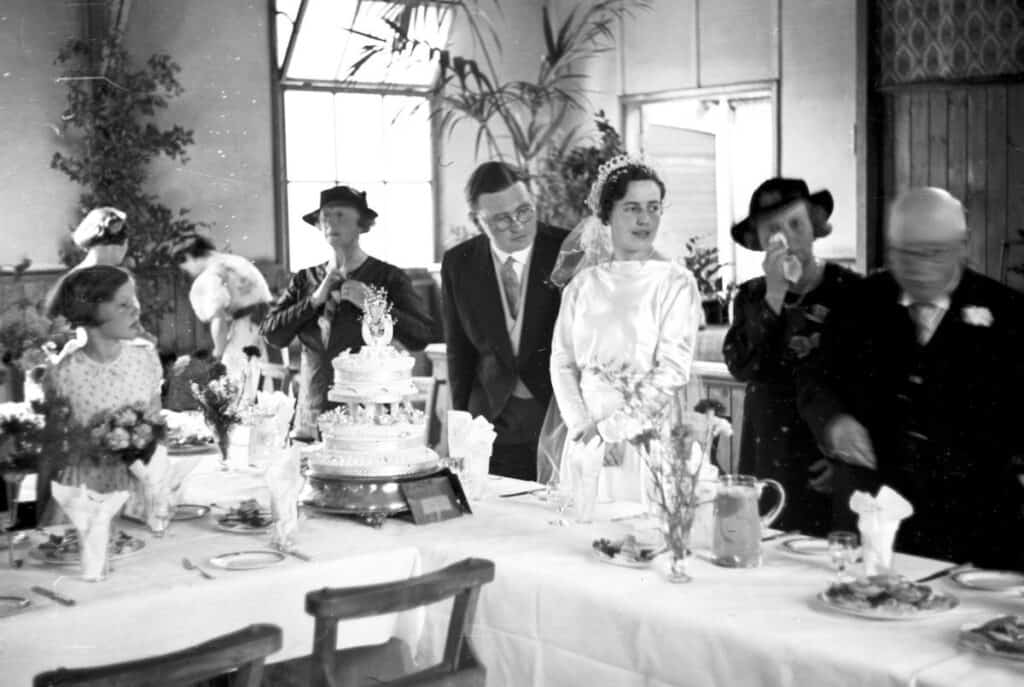
Influence of Prohibition
The 1920s were also defined by Prohibition, the national ban on alcohol that lasted from 1920 to 1933. While the law did not stop people from drinking, it did give rise to the underground speakeasy culture. Many couples during this time held their weddings at speakeasies, which offered a more intimate and exclusive setting than traditional venues.
Final thoughts
1930s weddings were a testament to the resilience of love amidst difficult times. Couples navigated the Great Depression by adapting to practical and affordable fashion, decor, and entertainment choices, all while maintaining a sense of elegance and glamour.
From wedding dresses inspired by Hollywood stars to dance-filled receptions, these celebrations showcased the beauty and romance of a bygone era.
For more historical wedding information, check out these posts:

